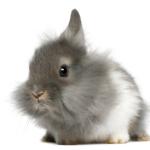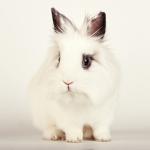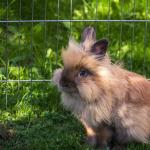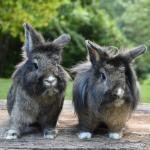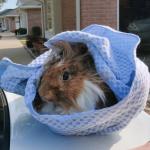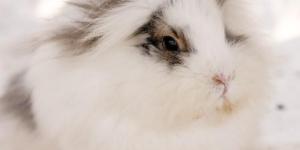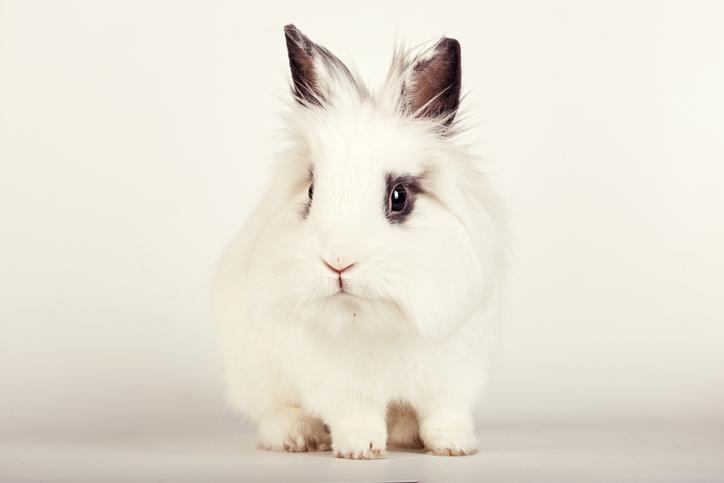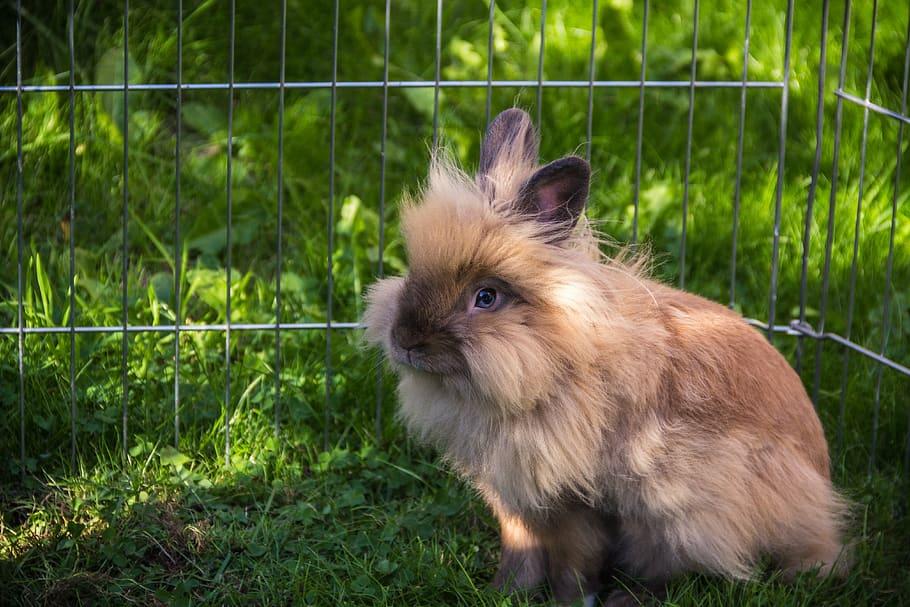Lionhead rabbit
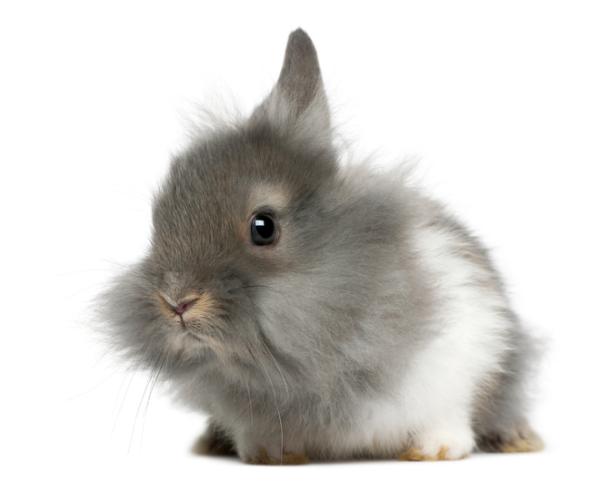
Do you know that there is a rabbit with a mane like that of a lion? The Lionhead rabbit has a ruff of hair that makes it look like the king of the jungle, even if their sensibility is a little less ferocious. These beautiful lagomorphs emerged by pure chance in Belgium a long time ago, although it was not until recently that they have become popular beyond European borders.
Do you want to know more about one of the fluffiest rabbits you can find? Stay with AnimalWised and discover all about the history, characteristics and care of the Lionhead rabbit.
- Europe
- Belgium
History of the Lionhead rabbit
Although the breed may not have been known worldwide until relatively recently, Lionhead rabbits are a long-lived breed that emerged in Belgium. This breed is the result of the crossing of Netherland Dwarf rabbits and Swiss Fox rabbits, the first specimens emerging with that particular lion's mane.
Although the breed arose in Belgium, its development occurred majorly in the United Kingdom. It was in this country where the breed was first made official in 1998. Currently, many other countries have also established an official standard for the Lionhead breed, although many others have not yet officially recognized them.
Characteristics of the Lionhead rabbit
Lionhead rabbits are small rabbits classified as a toy breed. Their size ranges between 1.3 and 1.7 kg (2.8 - 3.7 lbs), although specimens have been found that weigh up to 2 kilos. For this reason, there is no such thing as the dwarf Lionhead rabbit variety, since they are all toys. The average life expectancy of a Lionhead is about 8 or 9 years.
The body of the Lionhead rabbit is compact and short, with rounded features and a broad chest. What stands out the most, apart from their mane, are their long ears, which can measure about 7 cm (2.7"). The tail is straight and is covered by dense fur. Their head is oval and relatively large, with a rather long and wider snout in males. They have round eyes which protrude slightly and are very bright.
However, the most notable feature of the Lionhead rabbit is their mane. The fur is what has made them famous and is the trademark of the Lionhead breed. This tuft of hair that covers their heads when these rabbits are still young, but disappears when they become fully grown. This means their most characteristic feature is also ephemeral ephemeral. This mane can be of two types, which are determined by the genes of the rabbit:
- Single mane Lionhead rabbits: less bushy and short, disappears early. These rabbits are typical of crosses of a lionhead with other breeds.
- Double mane Lionhead rabbits: very bushy and bulky. These tend to preserve a certain mane even as adults.
The hair of the Lionhead rabbit is of medium length, except on the head. When they are born the latter is extremely long and thick compared to the hair on the rest of the body, reaching 5-7 cm in length. As we have mentioned, this will only last until the Lionhead is approximately 6 months old, at which point this hair begins to shorten and thin out until it disappears. In very rare cases they grow back a little, but never as when they are born.
Lionhead rabbit colors
According to the different official associations and organizations, such as the British Rabbit Council or ARBA, in this breed all the colors are accepted as long as they are recognized colors (i.e. they do not accept new colors). Likewise, it is mandatory that the color of the outer coat of hair be the same as that of the undercoat in the same area.
However, the most common colors and patterns of the Lionhead rabbit are as follows: black, sable, sable point, chocolate, white, blue, chinchilla, orange, brown, tan, butterfly, bicolor combined with white and tricolor combined with white.
Baby Lionhead rabbit
As we have mentioned, the peculiarity of the baby Lionhead rabbit is its lush mane around its head. This is one of the ways to identify the breed of the rabbit from birth. This can become a little more complicated when they are adult, sometimes causing them to be confused with other breeds.
Lionhead rabbit character
These funny bunnies have a very special character, as they are extremely affectionate and constantly seek the affection of their humans. In particular, the way they ask for the caresses they enjoy so much is adorable.
They are ideal to have as a pet, as they are calm and sociable. Of course, if they live with children, it is vitally important that they are educated to treat the bunny with respect. Along with respect, they require great affection, since their size makes them a little more delicate than other rabbits.
Rabbits in general are sensitive and fearful animals. When faced with noises or novel situations, our Lionhead rabbit may feel stressed. This is normal, although we must limit this stress as much as possible. If not, it can affect the health of the animal, even altering their behavior to become elusive or even aggressive.
Lionhead rabbit care
Lionhead rabbits, having a thicker and longer coat than most other rabbit breeds, need almost daily brushing. Ideally they should be brushed a minimum of 4-5 times a week. If we do not carry out this basic care, there is a risk that tangles and knots will form that are practically impossible to undo. The lack of brushing not only has aesthetic purposes. If the dead hairs are not removed from the eye area there is a high risk of conjunctivitis and other conditions that alter the vision of the rabbit. Brushing is also important to avoid the formation of hairballs (trichobezoars) in the digestive system, which can be very dangerous. If not regurgitated, they can lead to a fatal intestinal obstruction.
In the same way, we must take sufficient hygienic measures, eliminating dirt and remains of feces from the back of the body. Otherwise flies may be attracted to the area. If they deposit their eggs, it could cause a myiasis or result in fly larvae parasites. Both are very painful and difficult to treat. To keep these areas clean, we will use a damp cloth or wipe. We will only ever bathe a rabbit when strictly necessary, as they damage the oily layer that protects the rabbit's skin.
For all the above reasons, the most important care for the Lionhead rabbit is related to hygiene and maintenance of the coat. However, we also have to watch the diet of this little rabbit. We must be very aware that rabbits are herbivorous animals, so food of animal origin should never be included in their feed. Vegetables and fruits must be present, as well as a unlimited fresh hay and clean water.
Finally, we highlight the importance of offering the Lionhead rabbit a sheltered place to rest and sleep. The cage must be large enough so that the rabbit can move without any problem and stretch completely. Of course, it is essential that the Lionhead rabbit enjoys hours outside the cage to exercise, explore and interact with their humans. In no case is it appropriate to keep the animal confined 24 hours a day. Also, do not forget to offer your bunny suitable environmental enrichment, with toys that they can gnaw to wear down their teeth, enough hay, tunnels to exercise, etc.
See our article on tips for raising rabbits for more details.
Lionhead rabbit health
Due to the characteristics of its fur, the Lionhead rabbit tends to suffer from the accumulation of hairballs in the digestive system. Another consequence of the lack of hygiene and care of the coat, myiasis is one of the most frequent health problems in this breed. Both problems can be avoided by offering proper care. However, sometimes it is very difficult, especially in the molting season, to prevent our rabbit from ingesting large amounts of hair. In those cases, the important thing is that we turn to our trusted veterinarian. They can help examine the rabbit and prescribe products which can help digestive transit.
Rabbit teeth never stop growing, so in the Lionhead rabbit, and any other breed, it is possible to observe oral problems due to abnormal teeth growth. These include malocclusions. For this reason, we have to provide them with toys and wood so they can wear down their teeth and avoid problems.
To confirm that the health status of our lion-headed bunny is the best possible, we must go for regular veterinary check-ups. In these check-ups, the veterinarian will be able to detect possible anomalies and propose the most appropriate treatment. In addition, it is recommended to be aware of the vaccines that exist to keep our rabbit as protected as possible from diseases such as myxomatosis. This is a common disease in rabbits which can be fatal.
Where to adopt a Lionhead rabbit?
Before adopting a Lionhead rabbit, you must carefully assess whether you can offer all the care they need. Remember that you need to brush weekly and take time to play, exercise and socialize. If after evaluating all the information shared here you are clear that you can assume all their care, then it is best that you go to animal protectors and associations to adopt a copy of this breed. Although finding Lionhead rabbits to adopt is complicated, and even more so if you are looking for a baby rabbit, it is not impossible.
Today in animal shelters where we find dogs and cats for adoption it is also possible to find other animals such as rabbits. Likewise, there are associations dedicated to the rescue and subsequent adoption of exotic animals or small animals, such as rabbits, chinchillas and ferrets. You will have to research what is available in your area.
Vídeo de Lionhead rabbit
Lionhead rabbit photos
